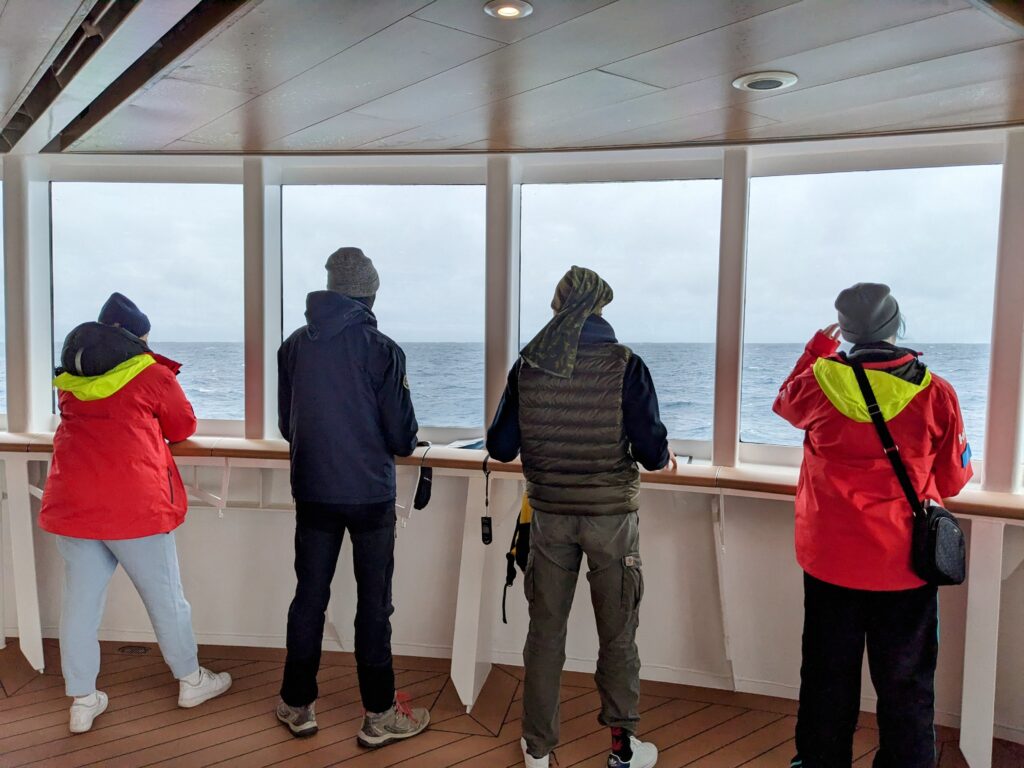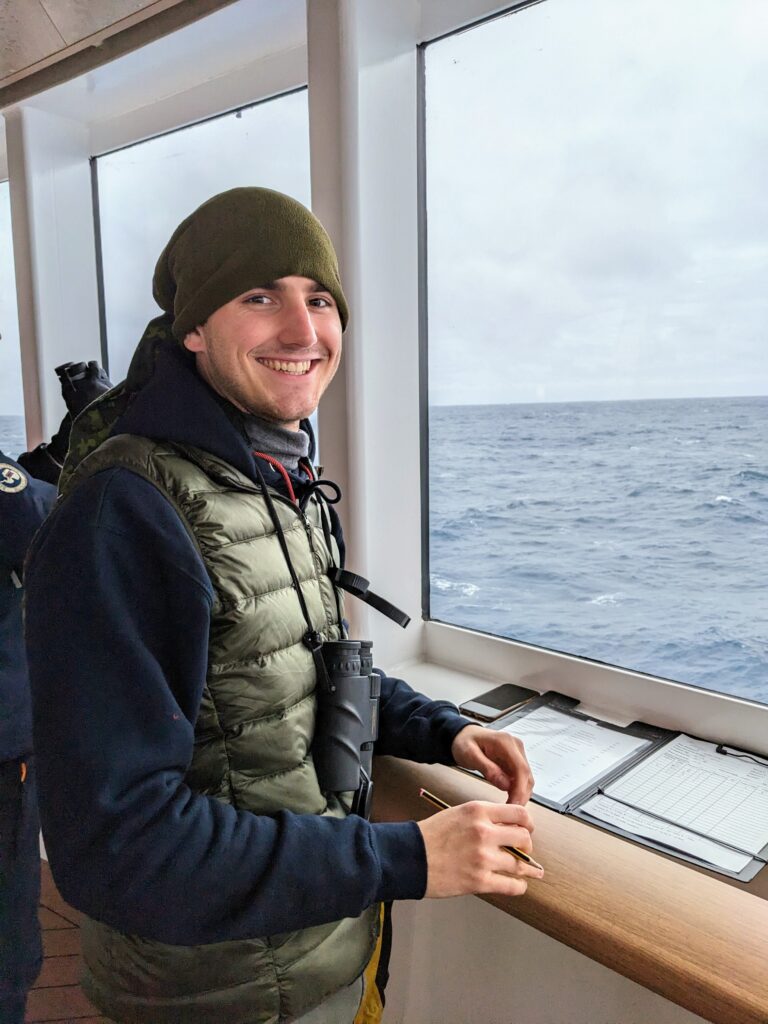The Treacherous Drake Passage

Day 3 – 9th January by Somerled
Dear readers, welcome!
You join us on our first day of surveying as we cross the treacherous Drake passage, known worldwide for its very rough sea! Since leaving Ushuaia the day before, weather seemed rather pleasant with few gusts of wind. Unfortunately, such peace was not meant to last because towards 2/3 a.m. the weather unleashed itself with winds reaching over 40 knots during the night and subsequent day. As a result, the swell grew with waves reaching up to 5 metres in height. Nevertheless, the Roald Amundsen endured and sailed on, though it was starting to be quite unstable to walk around the vessel. Such swell then led to sea sickness wreaking havoc in our group causing a good amount of us (10 to be precise) to be bed ridden for most of the crossing. However the six survivors along with the help of our amazing lecturers and copious amounts of sea sickness tablets soldiered on and got to grips with the sampling techniques and started data collecting.
Due to high waves and low visibility, marine mammal surveys were put on hold for the day. Thus, sea birds became the primary focus of the group. The main character of the day was most certainly the blue petrel, a small species of petrel with a wingspan ranging from 60-70 cm, which was sighted many a time. In addition, the crossing was graced by the presence of a few of

the giant bird species common to the area. The majestic Black Browed albatross and Southern Giant petrel stand at the top of this category with wingspans ranging from 200-250 cm and 170-210 cm respectively. Yet, size is not all that counts for one of the most special sightings of the day was that of the Wilson’s storm petrel. One of, if not the smallest bird species to be spotted on this Antarctica trip, it is dwarfed by the previously mentioned giants. A small brown bird with white patterns that can fit in the palm of your hand and possesses a wingspan of only 80-90 cm.

After a long and arduous day of battling sea sickness and bird surveys, the survivors reconvened with the leaders of the group to discuss plans for the following day. Fuelled by the excitement of the initial data collection and for what was awaiting them, everybody went to bed relatively early, hoping that the next day the sickly would ‘come back from the dead’ and everyone be able to survey and enjoy the trip.
